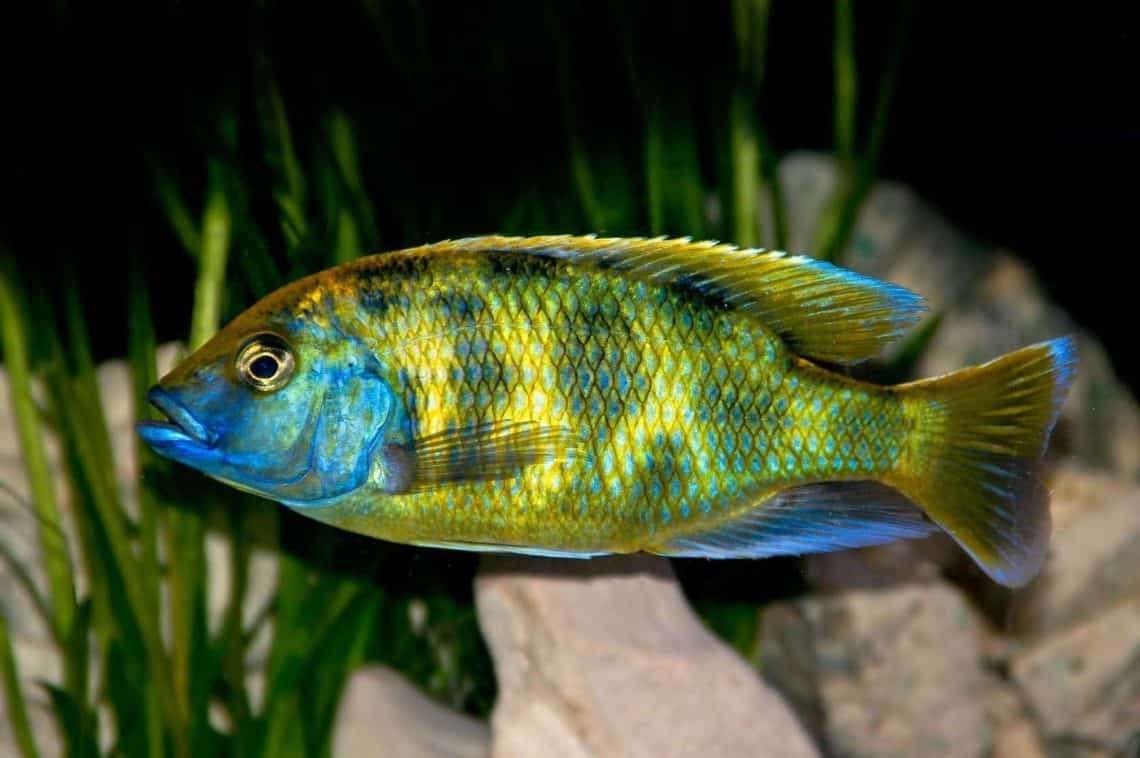The Venustus is a good sized cichlid with a stocky elongated body and a large mouth
Table of Contents
Venustus Cichlid Fish: Characteristics, Care, and Breeding
Are you looking for a stunning addition to your aquarium? Consider adding Venustus cichlid fish! These striking fish, also known as Nimbochromis venustus, are native to Lake Malawi in Africa and are popular among aquarium enthusiasts. In this article, we’ll explore the characteristics, care, and breeding of Venustus cichlid fish.
Characteristics of Venustus Cichlid Fish
Venustus cichlid fish are known for their striking appearance. They have a blue-green body with yellowish fins and a black stripe that runs from their nose to the end of their tail. Males are larger and more colorful than females, with longer fins and a more pointed head. They can grow up to 10 inches long and can live for up to 10 years in captivity.
Aquarium Requirements
When it comes to housing Venustus cichlid fish, you’ll need to provide them with a spacious aquarium. A 75-gallon tank or larger is recommended for a single fish or a pair. These fish are aggressive and territorial, so make sure to provide plenty of hiding spots and caves for them to claim as their own. Adding other fish to the tank can be challenging, so it’s best to keep them with fish of similar size and temperament. Provide a sand substrate and a pH of 7.5-8.5, and keep the water temperature between 76-82°F.

Feeding Venustus Cichlid Fish
Venustus cichlid fish are carnivorous and should be fed a diet that is high in protein. They will happily eat a variety of foods, including flakes, pellets, and frozen or live foods such as shrimp, krill, and bloodworms. Feed them once or twice a day, but make sure not to overfeed them as they can become obese and develop health problems.
Breeding Venustus Cichlid Fish
Breeding Venustus cichlid fish can be challenging but rewarding. Start by creating a breeding pair, which involves selecting a male and female fish and isolating them in a separate tank for several weeks. Provide them with a cave or other hiding spot for them to lay eggs. Once the eggs are laid, the male will fertilize them and guard them until they hatch. The fry can be fed a diet of baby brine shrimp or crushed flakes.
Health Issues
Venustus cichlid fish are generally hardy fish but can be susceptible to certain health issues. These include bacterial infections, parasitic infections, and swim bladder disease. Signs of illness include lethargy, loss of appetite, and abnormal swimming behavior. If you notice any of these signs, consult with a veterinarian who specializes in fish health.
Conclusion
Venustus cichlid fish are a stunning addition to any aquarium. They are known for their striking appearance and can grow up to 10 inches long. When it comes to care, they require a spacious aquarium, a high-protein diet, and a pH of 7.5-8.5. Breeding them can be challenging but rewarding. Keep an eye out for signs of illness and consult with a fish veterinarian if you notice anything abnormal.
FAQs
- Can Venustus cichlid fish live with other fish?
- These fish are aggressive and territorial, so it’s best to keep them with fish of similar size and temperament.
- How big do Venustus cichlid fish get?
- These fish can grow up to 10 inches long.
- What should I feed Venustus cichlid fish?
- These fish are carnivorous and should be fed a diet that is high in










